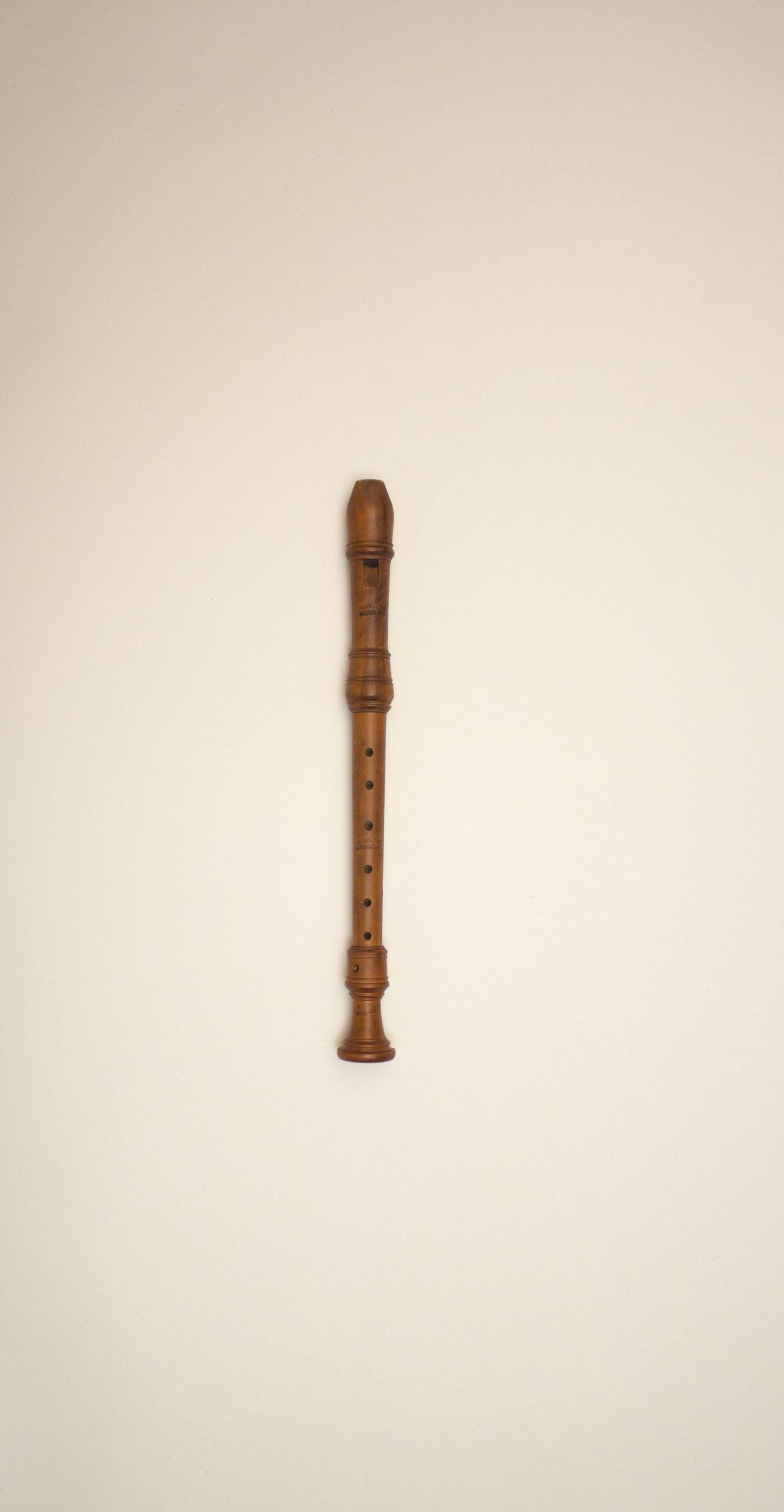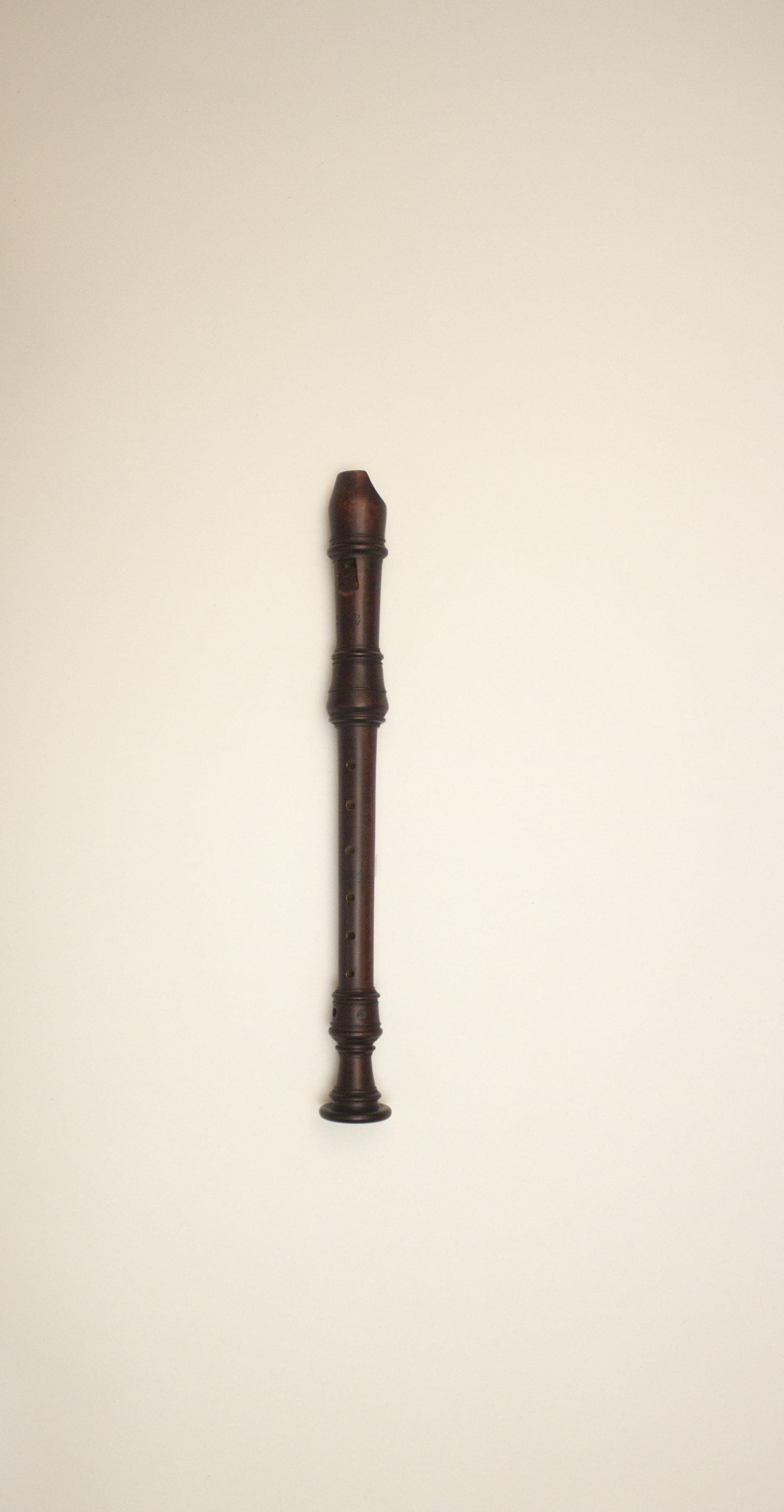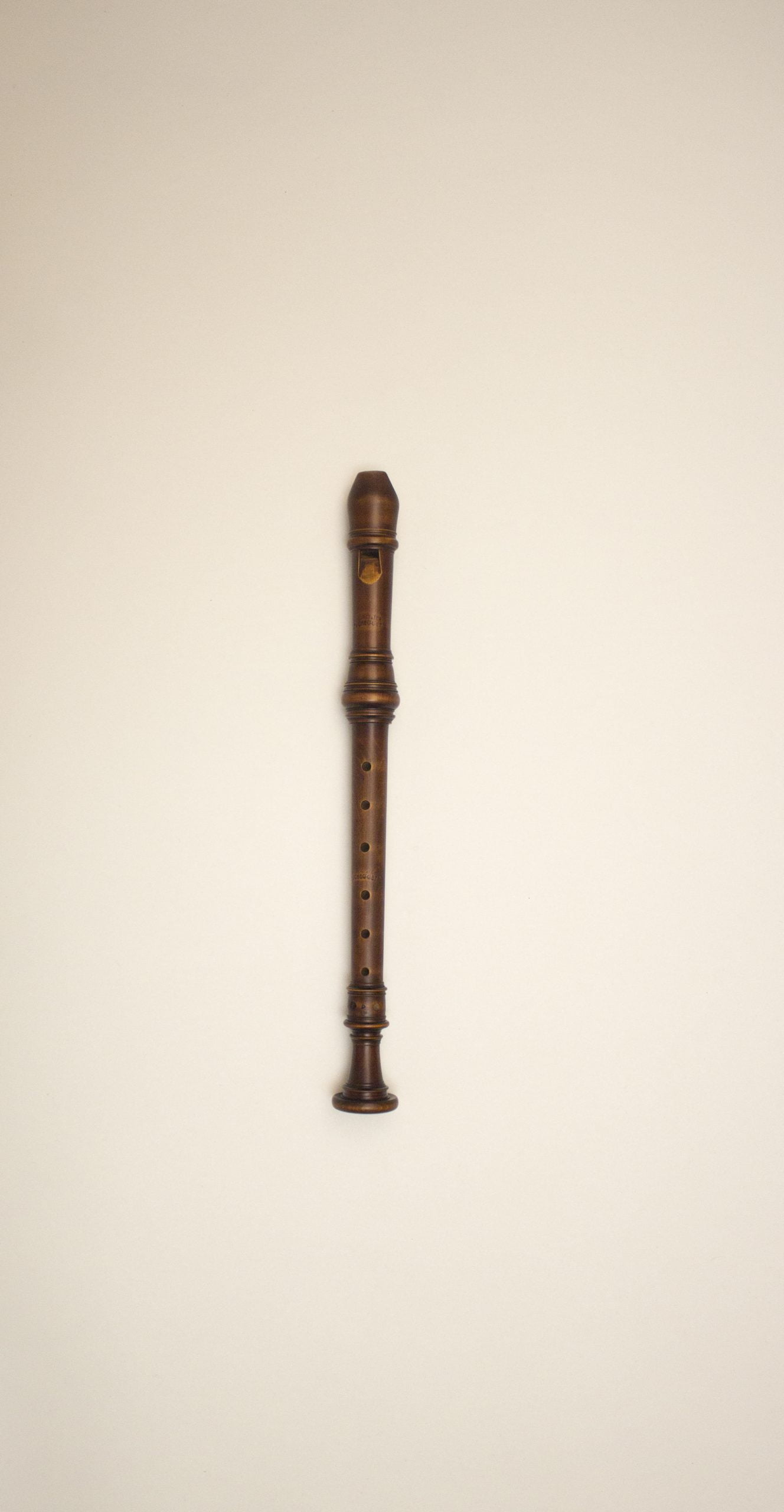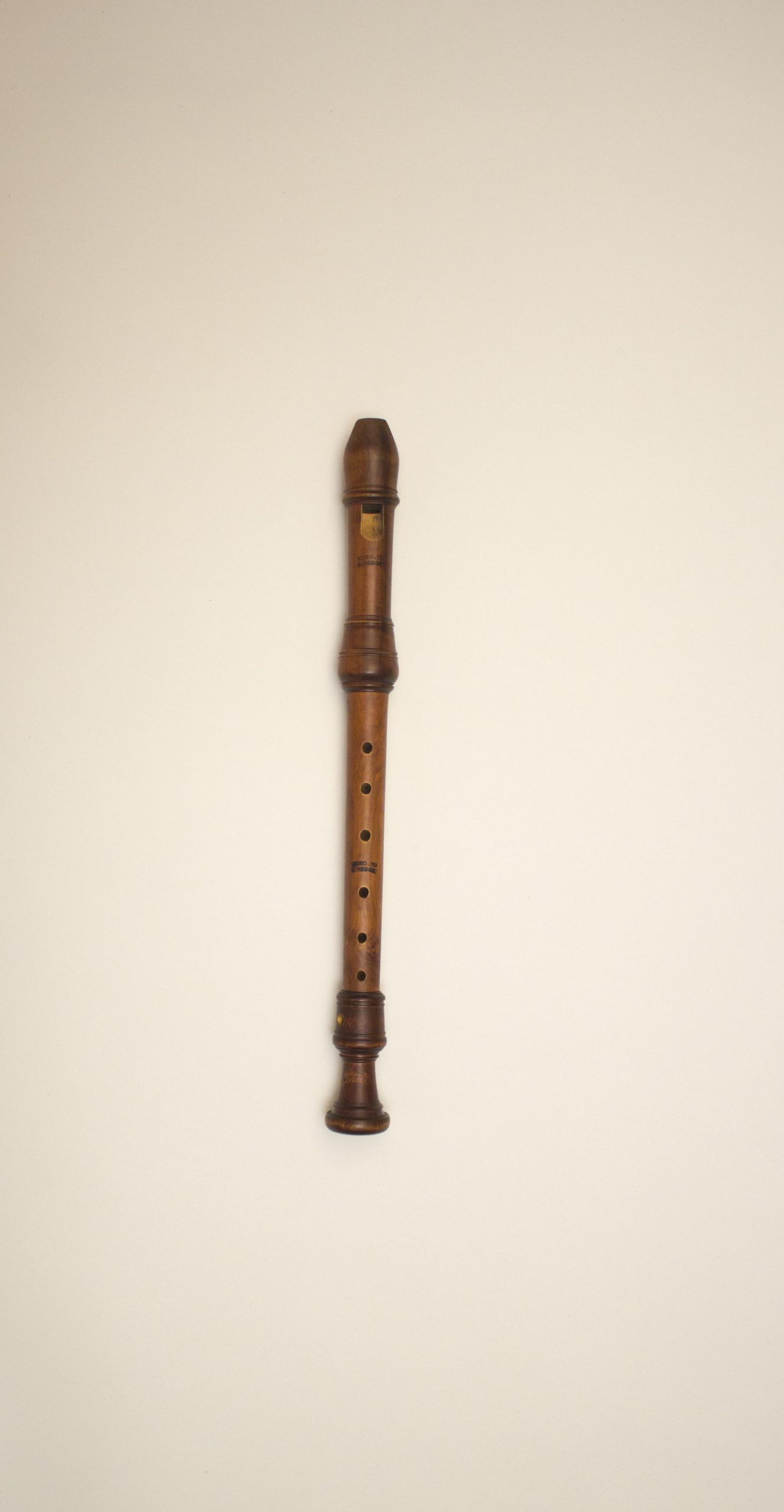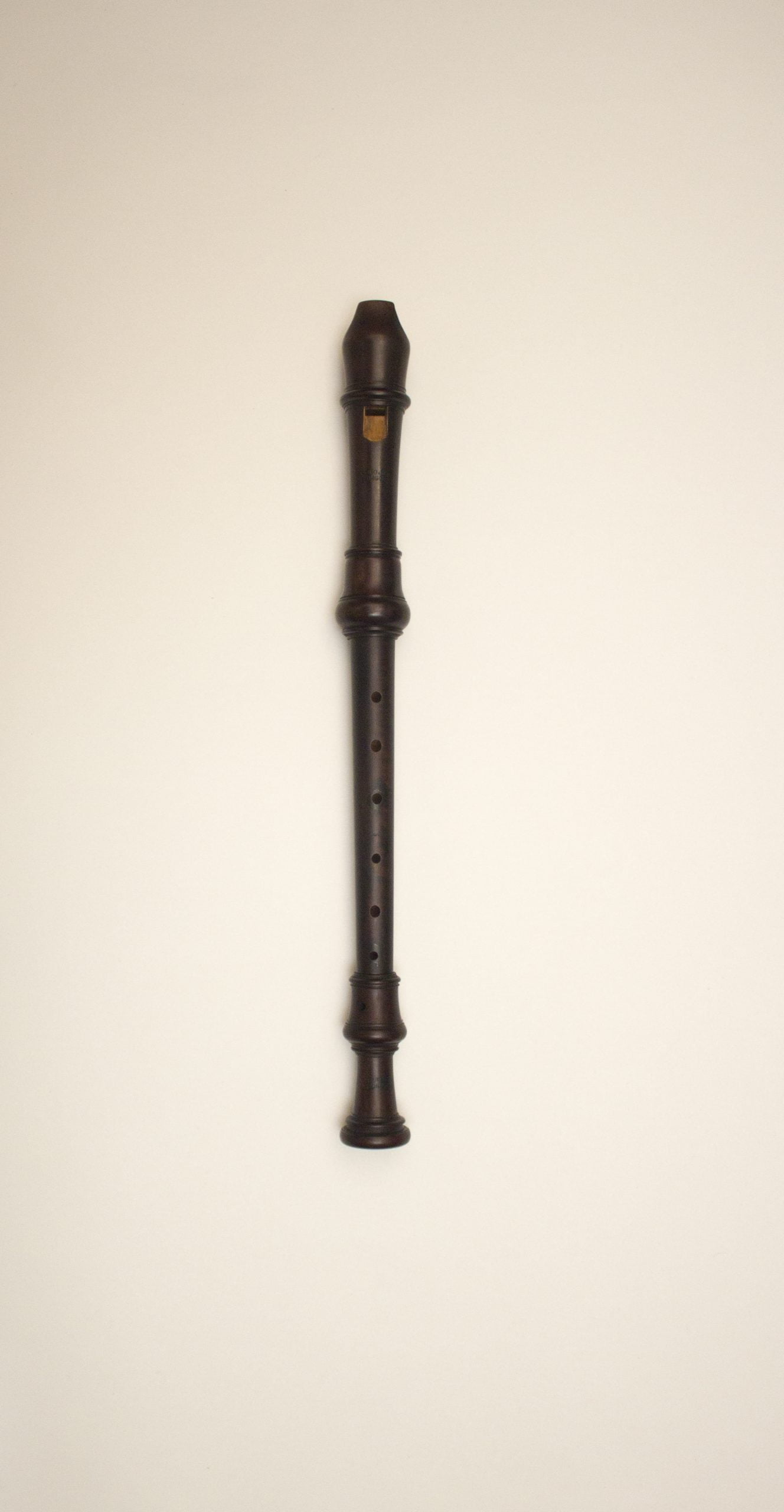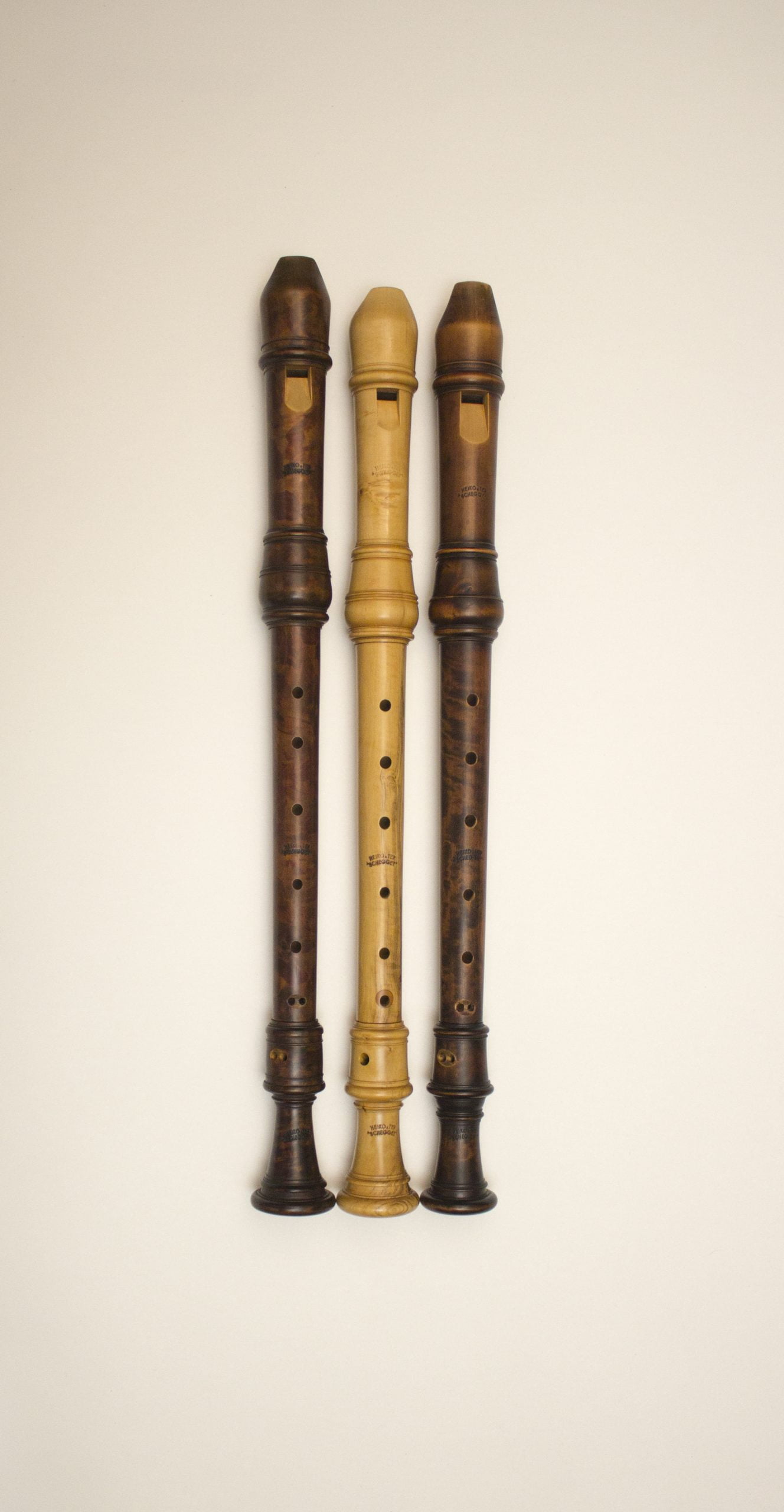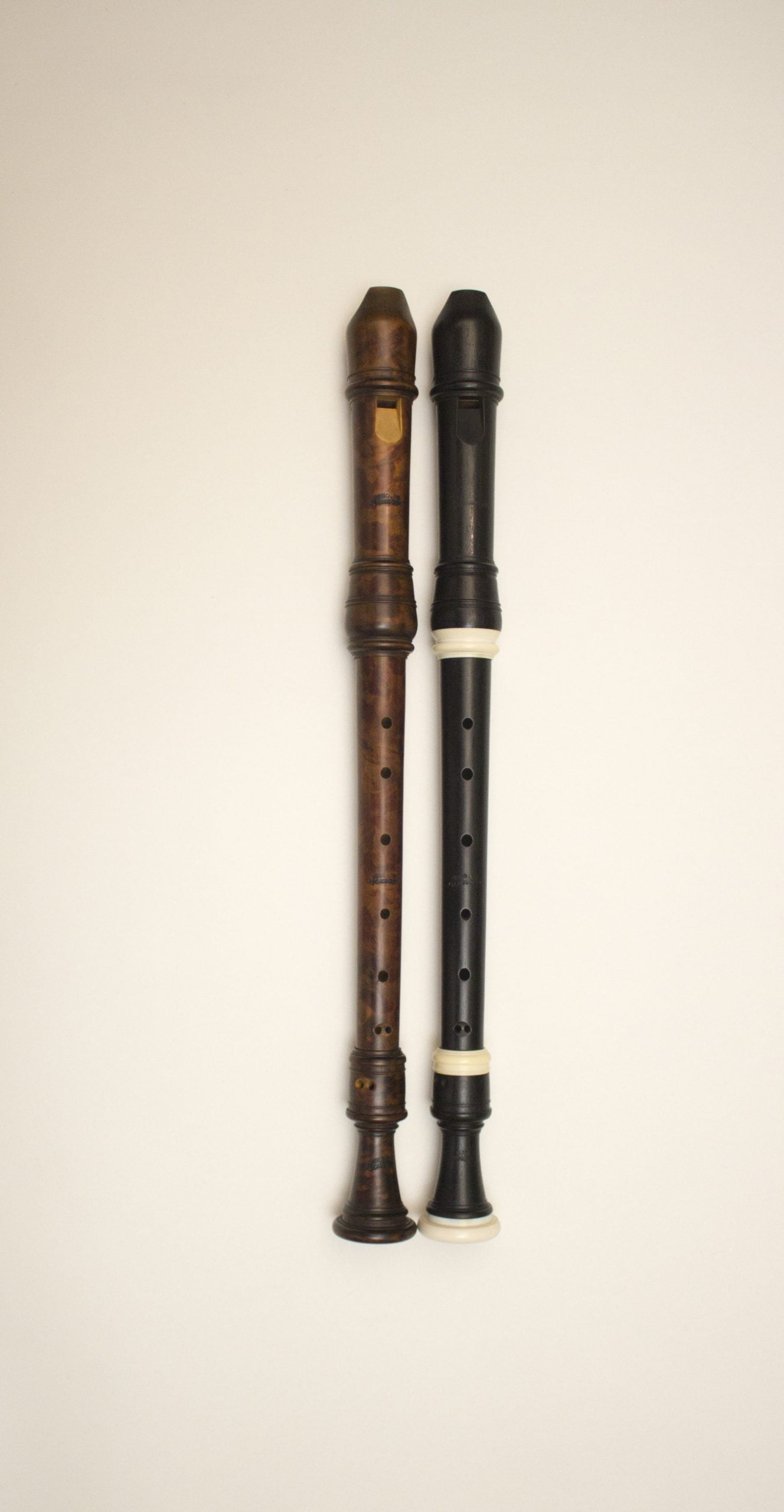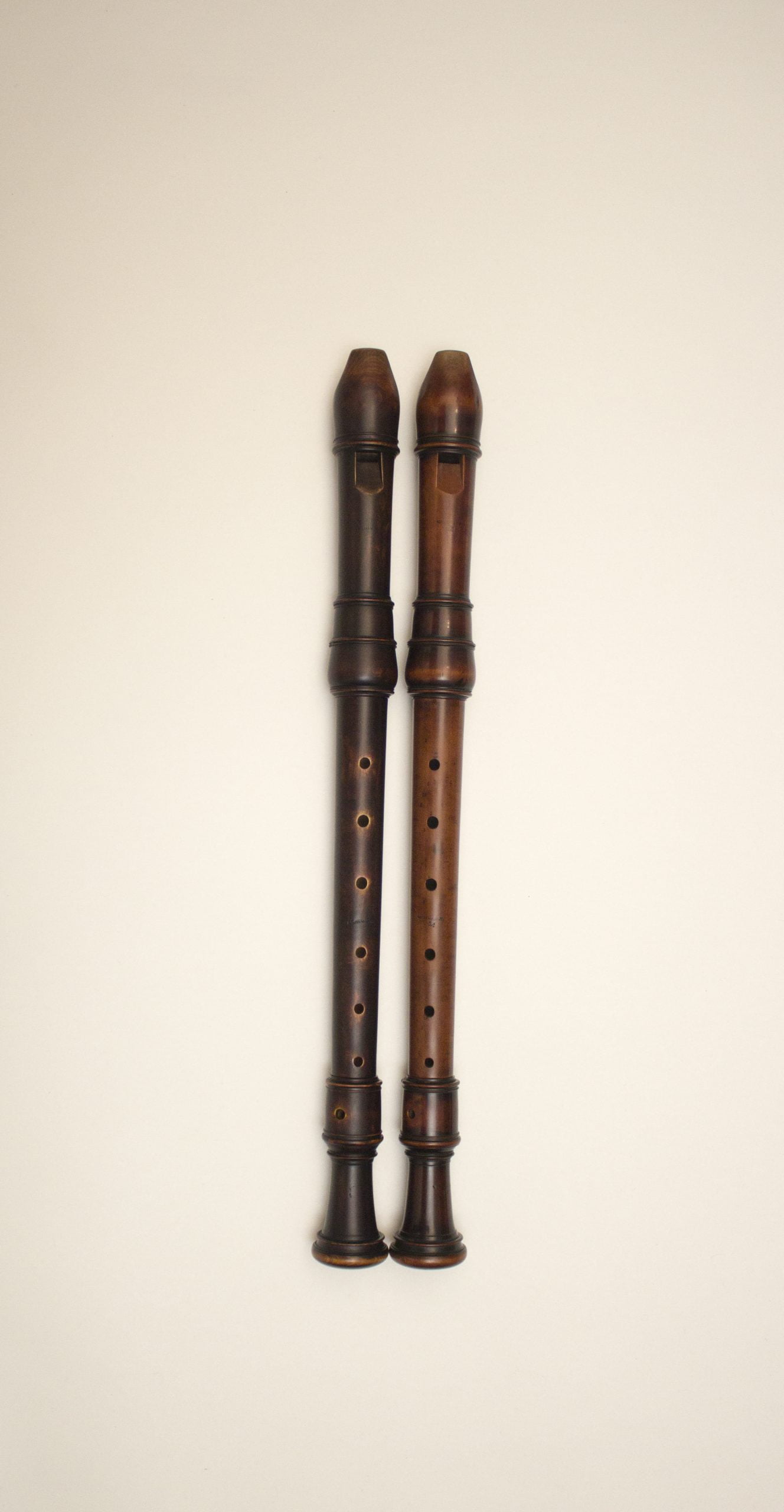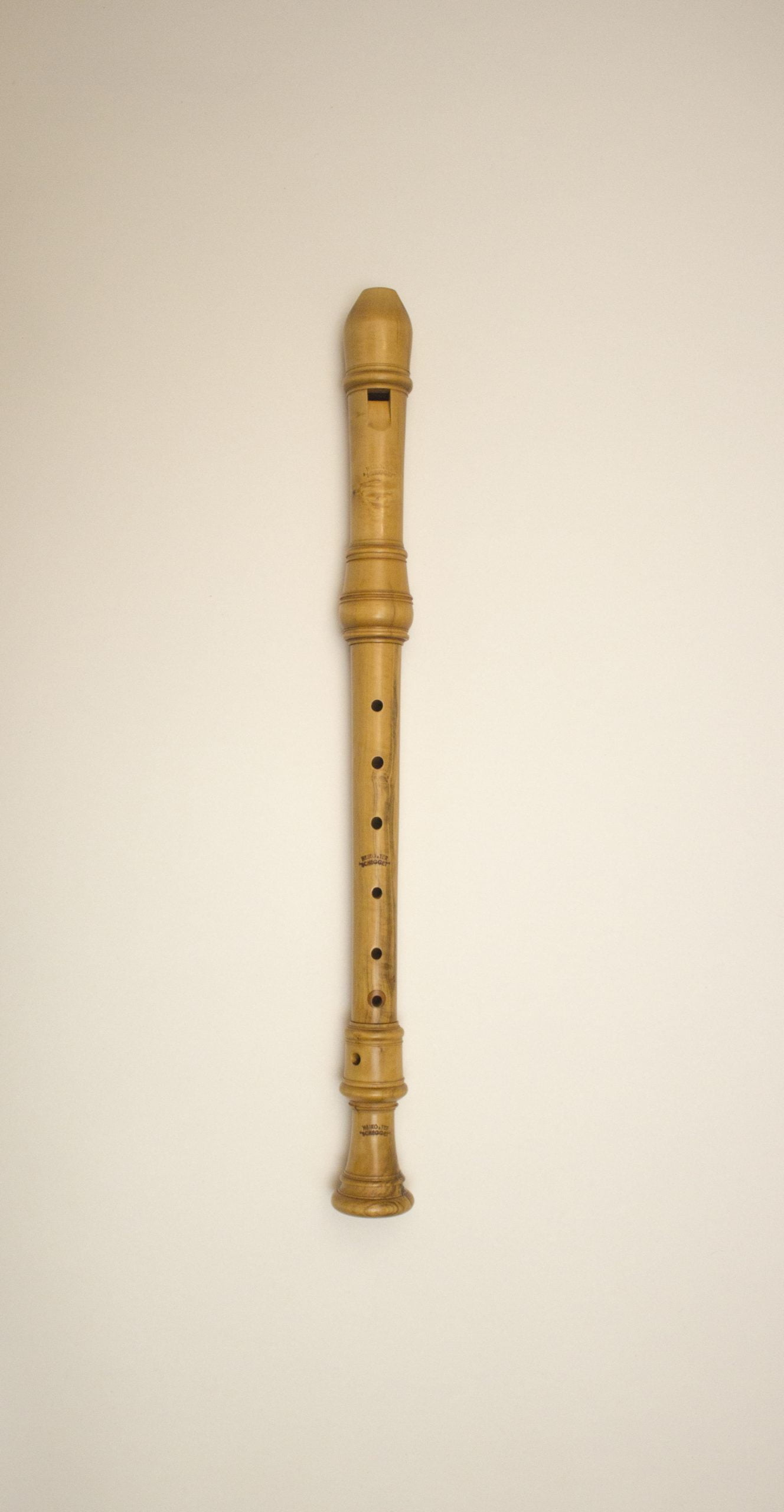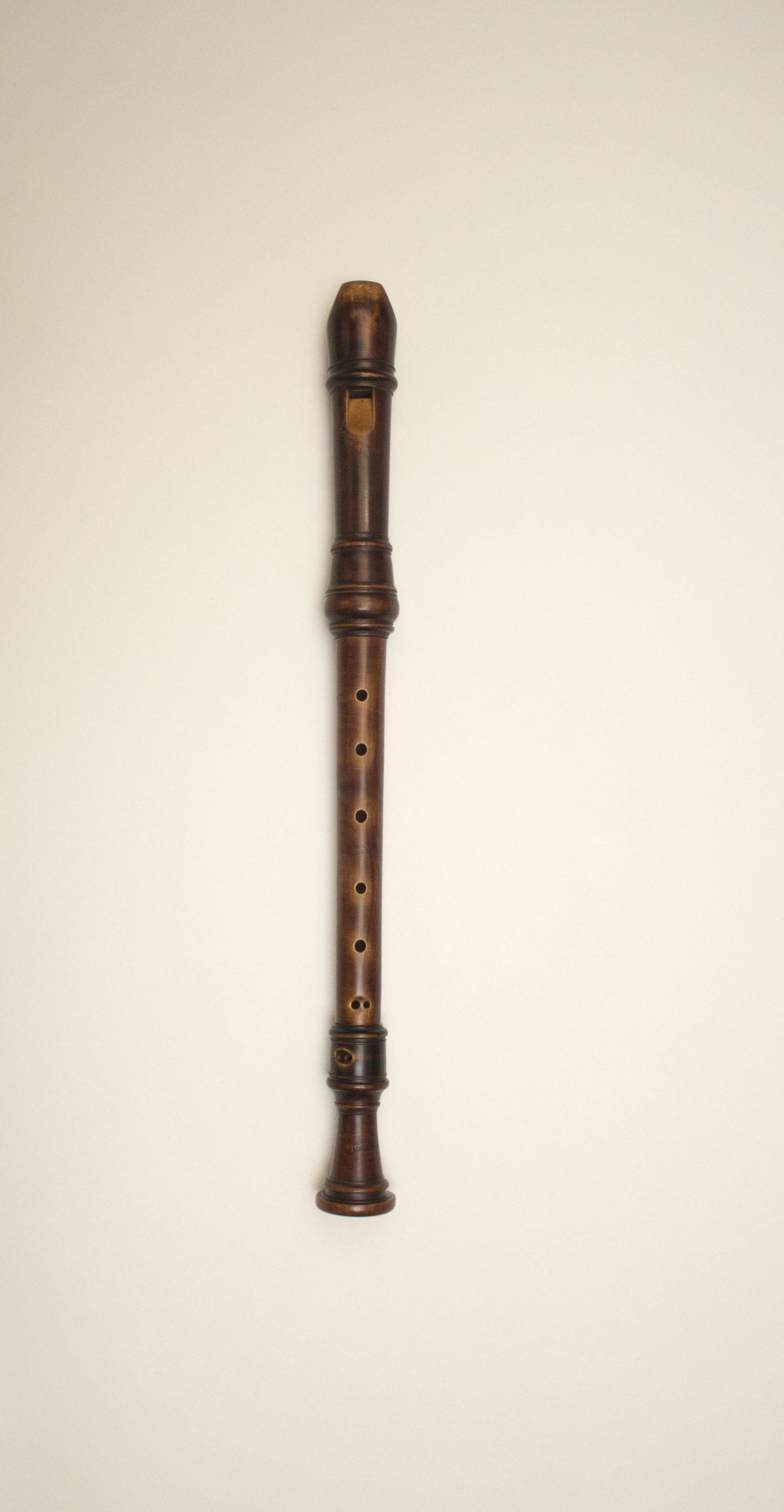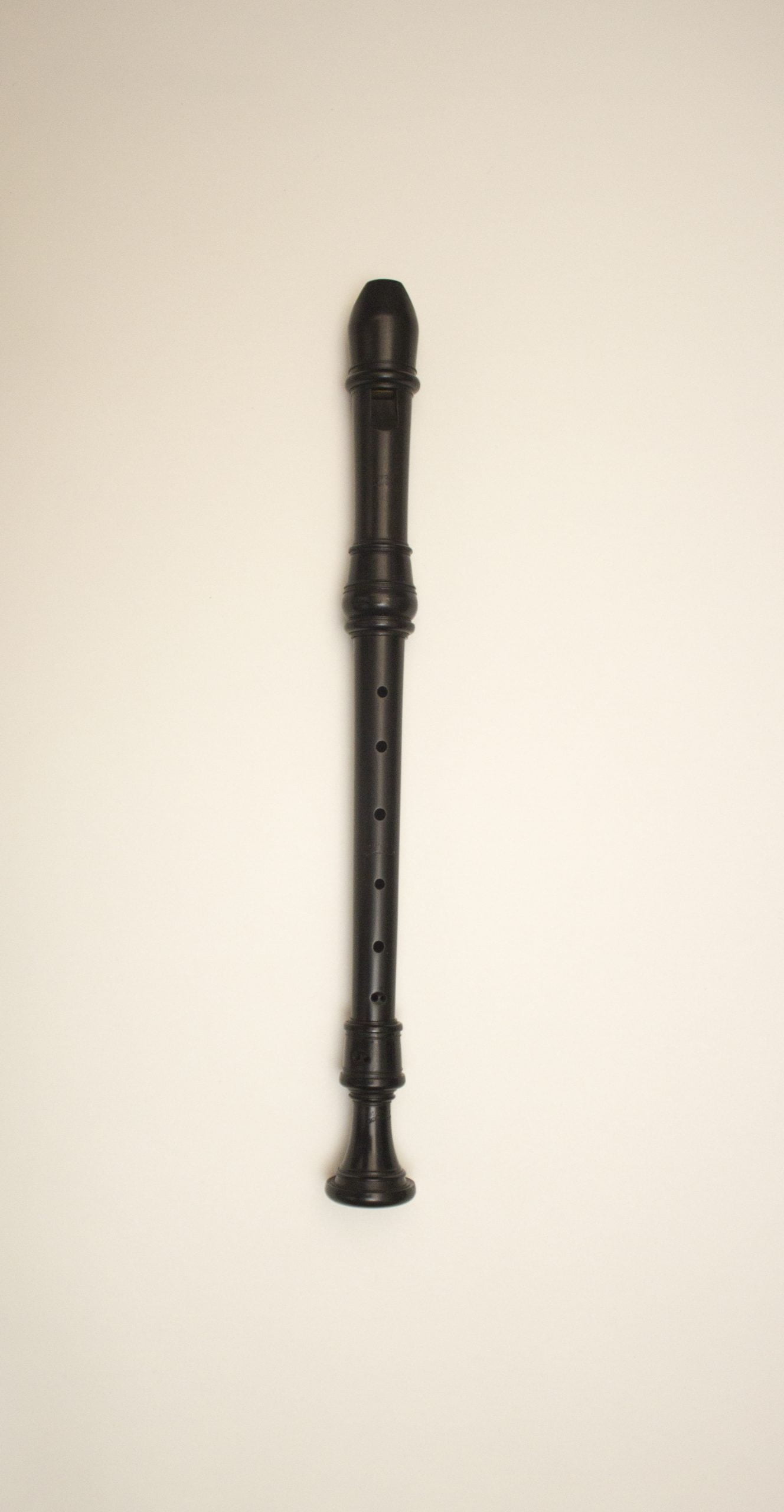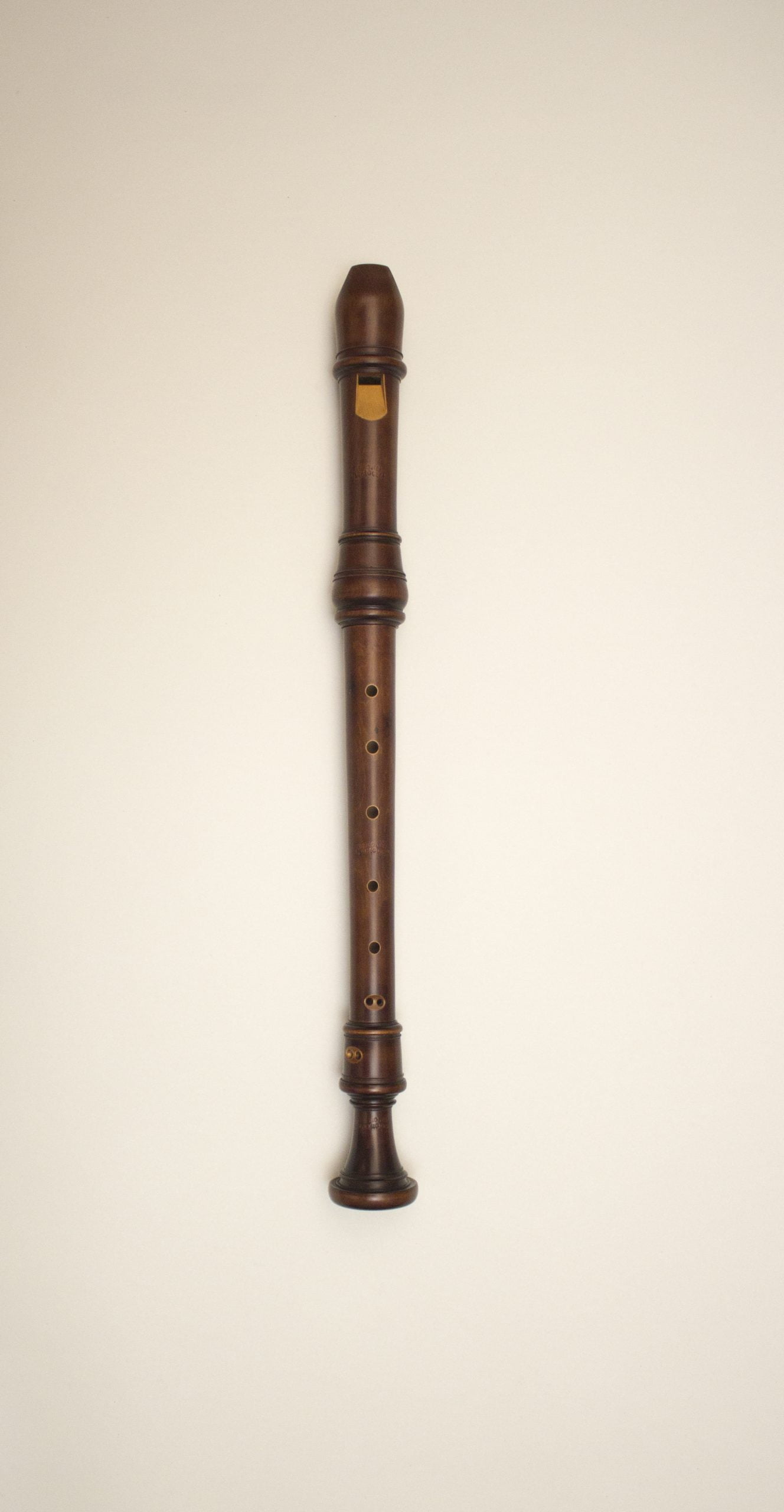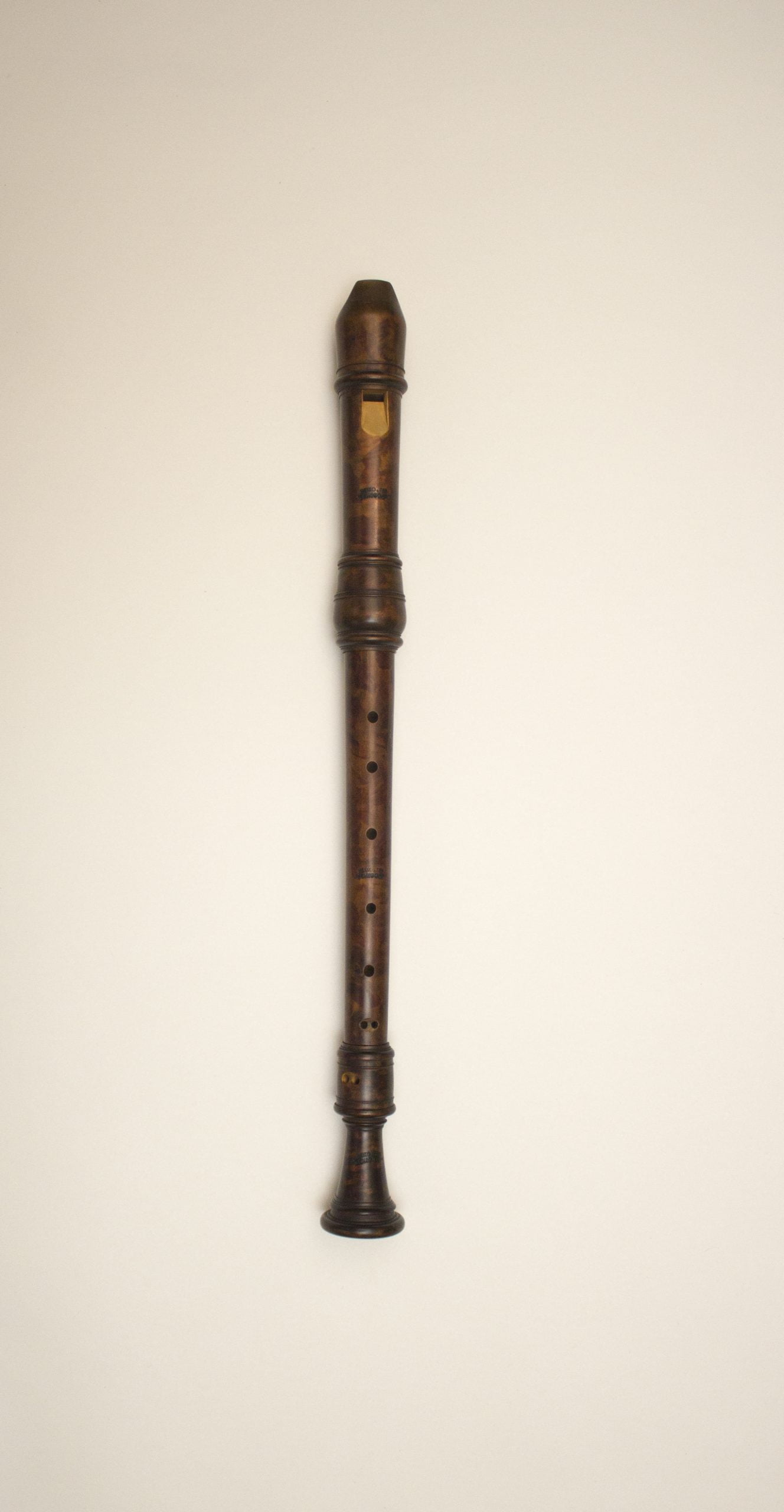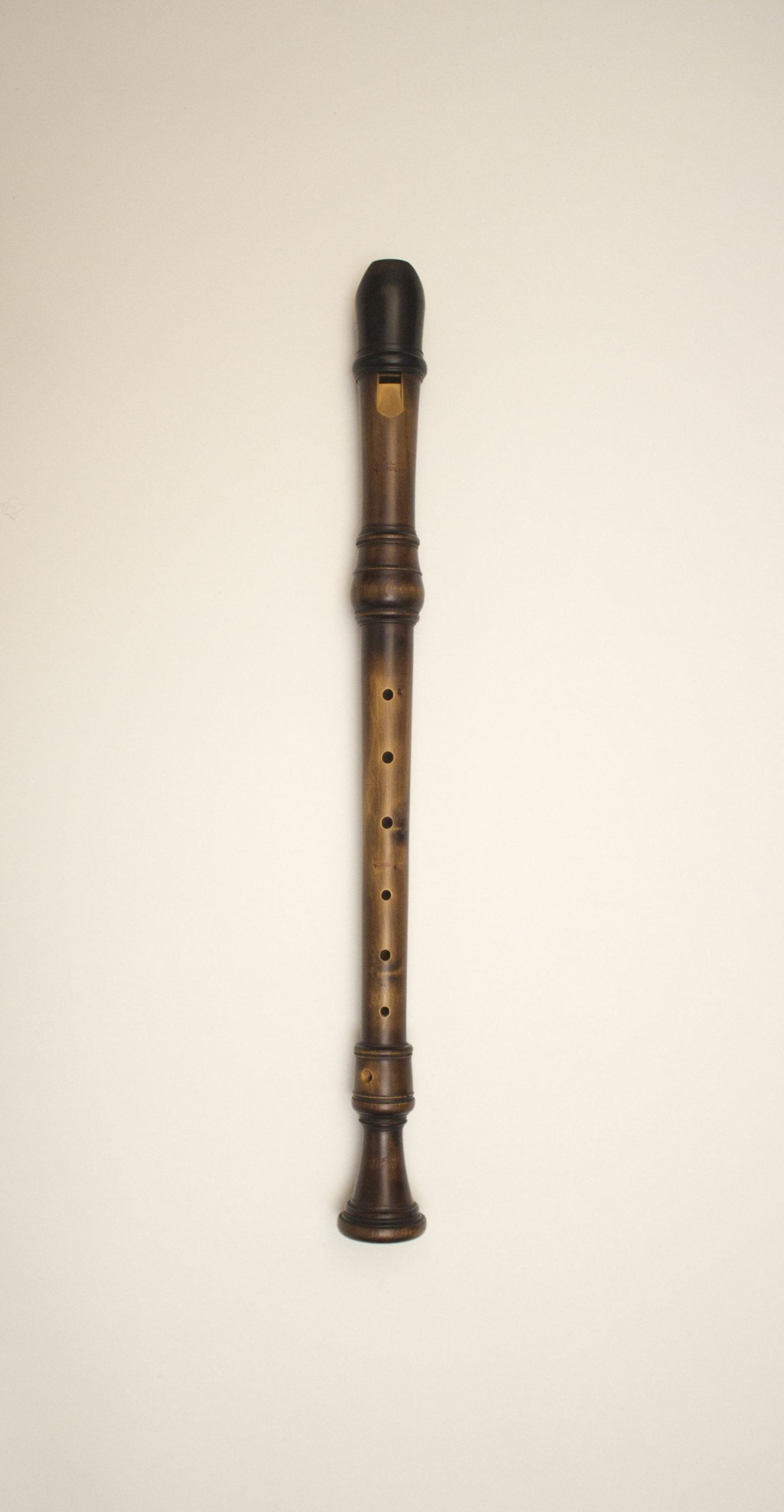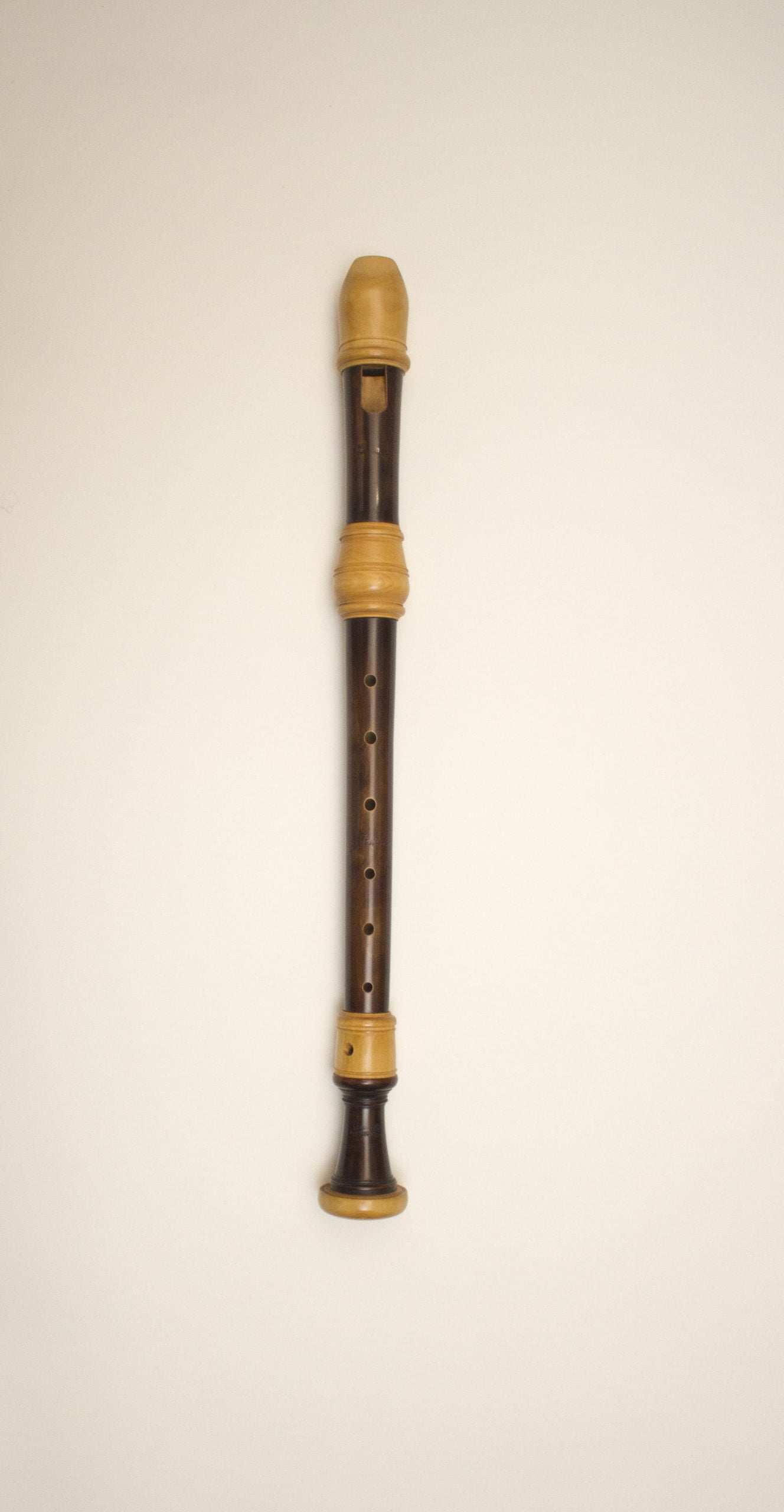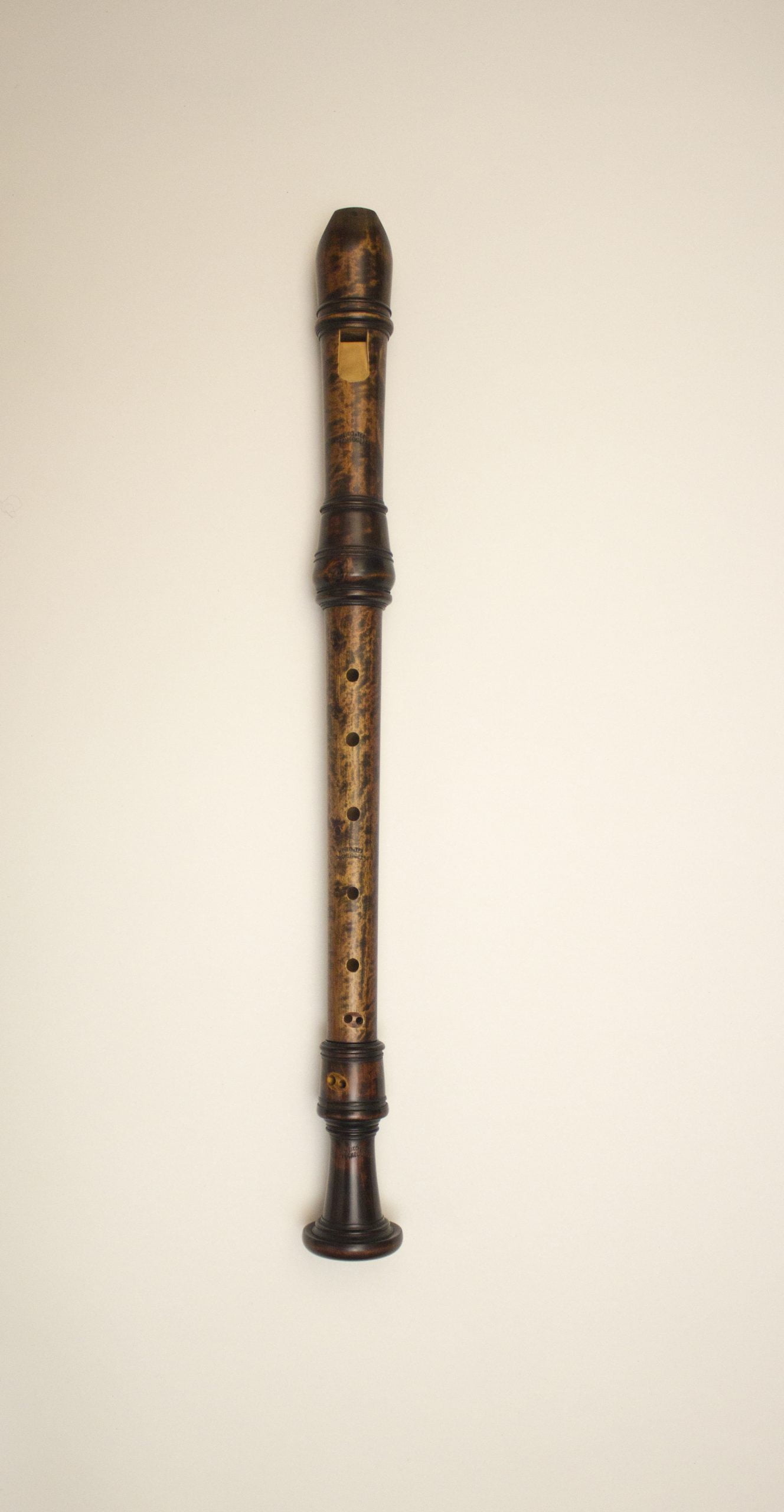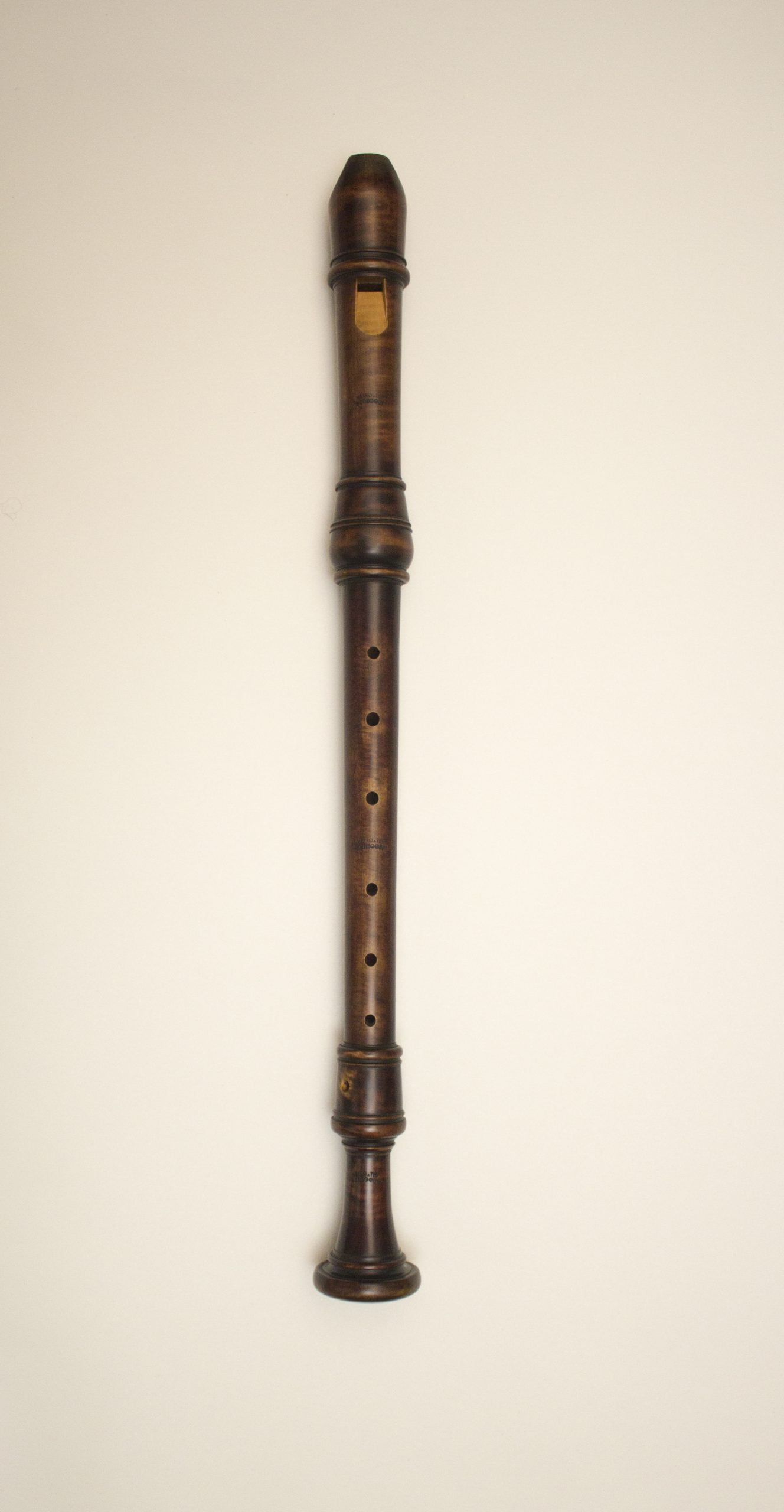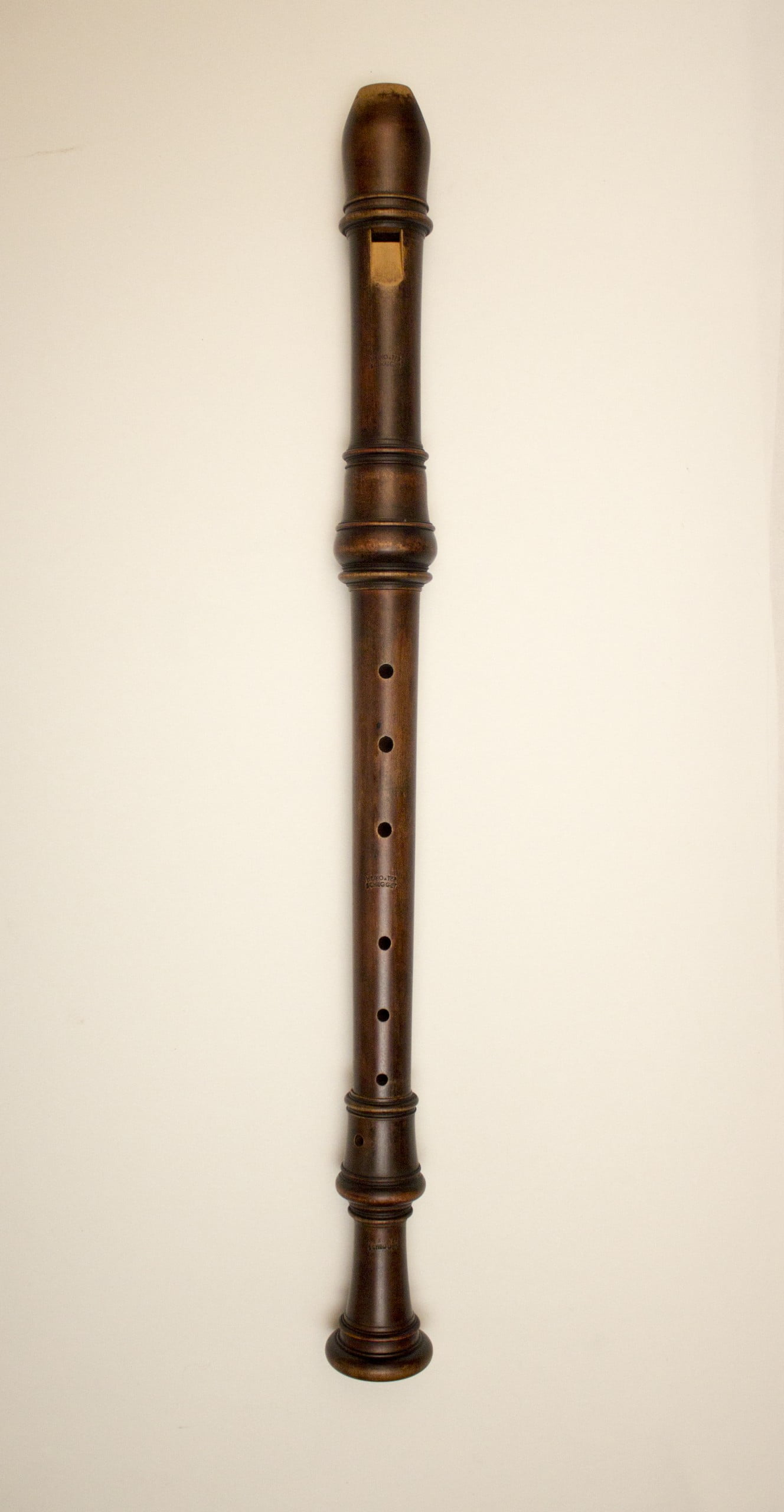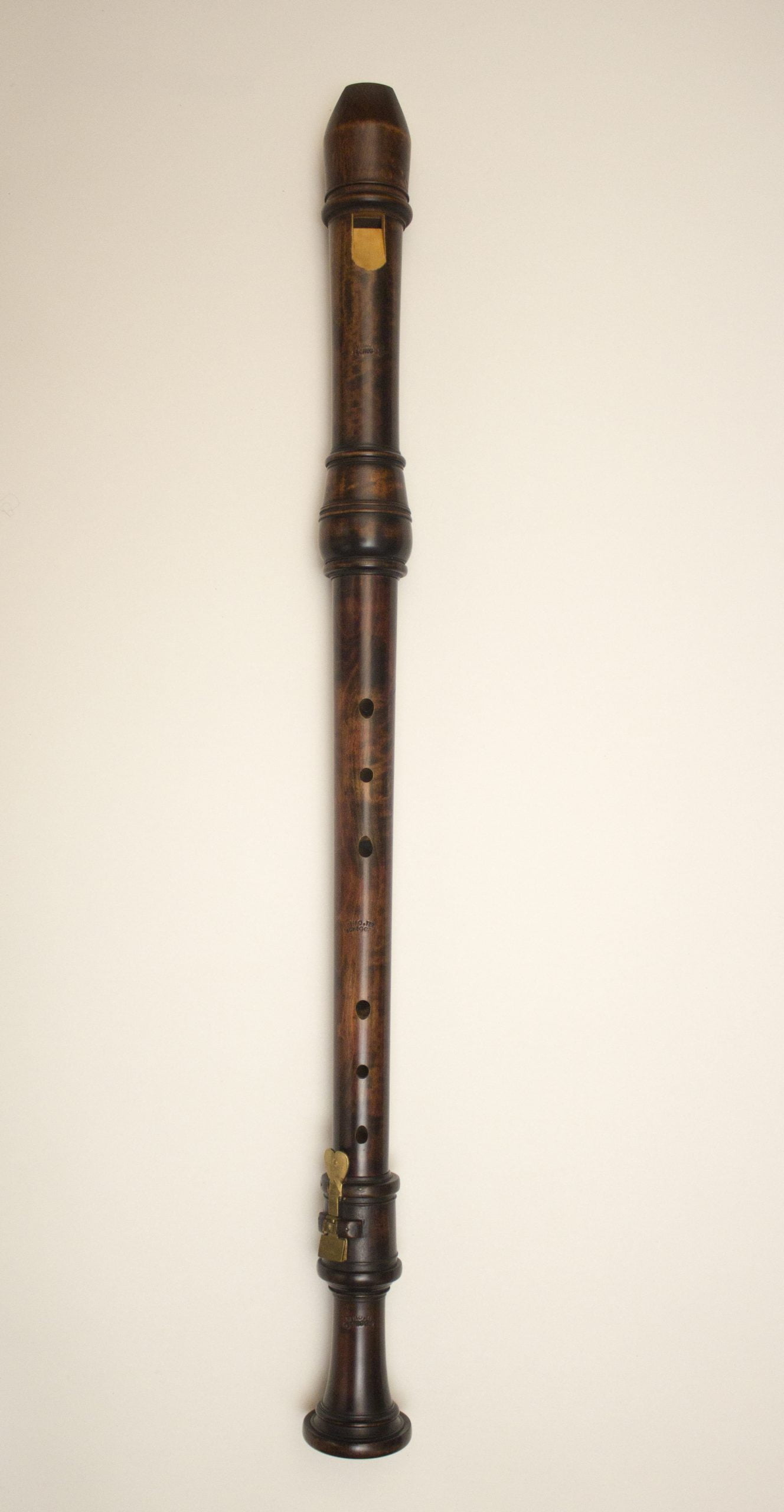© 2021-2023 Heiko ter Schegget
Menu
My history as a recorder maker
All the way back in 1975, when I started at the Utrecht Conservatory as a seventeen-year-old, I took part in a two-day block-cutting course led by recorder maker Klaus Scheele. And so my career as a recorder maker began! Klaus Scheele not only taught me to tune a recorder, but also how to cut a new block for an existing instrument. What then took me by surprise was that the new block I had cut for my soprano sounded better than the original one. Beginners luck, obviously! I enjoyed the handiwork and contrary to my co-students continued cutting blocks for the multiple mass-produced recorders that circulated in my surrounding. It only took a little while for my co-students and other players to ask me to cut blocks for their recorders. Through trial and error, I learnt how to voice and tune a recorder. Often I would ask professional recorder makers for advice.
After five years and some 200 blocks, I finally bought my first lathe and other tools to make myself a complete recorder. So, in the spring of ’81 I made my first treble recorder after an original by Engelbert Terton and another Voice Flute after Johann Christoph Denner. Those became the recorders that I played during my solo final exam in Utrecht in the same year.
Over the last forty years I have made countless recorders after originals from the renaissance and baroque of various sizes and voicings and I have played some 150 historical recorders. To discover the remarkable diversity among those originals, and my attempt to understand each individual instrument from the inside out, has been a unique and rewarding experience.
The workshop
The workshop
Photo: Petra Nuria Nieuwburg
Drawing of the Richters soprano
At the lathe
Reaming the bore
Photo: Petra Nuria Nieuwburg
Turning
Photo: Petra Nuria Nieuwburg
Cutting the labium
Photo: Petra Nuria Nieuwburg
Cutting the windway
Photo: Petra Nuria Nieuwburg
Checking the windway
Photo: Petra Nuria Nieuwburg
Boxwood
Photo: Petra Nuria Nieuwburg
At work
Picking up wood
Photo: Petra Nuria Nieuwburg
Wood in the truck
Photo: Petra Nuria Nieuwburg
My thoughts on making a recorder
Authentic recorders from the Renaissance and Baroque have unequalled acoustic qualities. It is my view that when one attempts to match their quality it is necessary to also match their building process. When the old masters, like Bassano, Bressan, Stanesby were at work, (small) accidental and unintentional acts contributed to the attributes that define their instruments.
This means that when making recorders, I do so without the aid of ‘modern’ tools. An electrical saw, drill sting, a milling machine or the tools developed in the twentieth century to make windways won’t be found in my workshop. Only the lighting, lathe and vacuum cleaner are electric. Of course, I am always scouting for that miraculous 300-year-old lathe…
This process means that no recorder will ever be a carbon copy of another. None of the six treble recorders made by Peter Bressan (London, 1663-1731), that I have had the honour of playing, sound the same and each and every one of them has made a permanent impression on me as a maker and player.
Such an impression is required to make a ‘successful copy’. This means that I’ve held the originals and have also played them, extensively. More recently, curators have started to forbid the playing of the original instruments under their care which means that today’s generation is unfortunately barred from such experiences.
Fortunately, I am the proud owner of two eighteenth century recorders, namely a soprano made by Hendrik Richters (Amsterdam, 1683-1727) and a treble by Willem Beukers (Amsterdam, 1666-1750). With their delightful, unique and wilful tonal qualities and their gorgeous, masterful form and turnery they are a continuous source of inspiration. Their presence in my home means that every day I am reminded of the fact that I do not know better than the old masters!
Models
- All
- Sopranos
- Altos
- Tenors
Price list for baroque recorders
The recorders are available in both the original pitch and a=415Hz. Additionally, they can be made with original or with Dolmetsch fingering.
- Soprano in D €1750
a=415Hz, sixth flute after Thomas Stanesby Jr. (London, 1692-1754) from the collection of Frans Brüggen.
- Soprano in C €1800
a=410Hz or 415Hz, after Hendrik Richters (Amsterdam, 1683-1727), from my personal collection.
- Soprano in C €1800
a=405Hz or 415Hz, after Engelbert Terton (Amsterdam, 1676-1752), now part of the collection of the Rijksmuseum in Amsterdam.
- Soprano in B-flat €1850
a=415Hz, fourth flute after Peter Bressan (London, 1663-1732) from the Bate-collection in Oxford.
- Alto in A €1900
a=400Hz or 415Hz, third flute after Robert Wijne (Nijmegen, 1698-1774) located in the Gemeentemuseum in The Hague.
- Alto in G €1950
a=415Hz, after Johann Benedikt Gahn (Nuremberg, 1674-1711) and Johann Wilhelm Oberländer (Nuremberg, 1681-1763).
- Alto in F €2000
a=415Hz, after Willem Beukers Sr. (Amsterdam, 1666-1750), the original is part of my personal collection.
- Alto in F €2000
a=440Hz, after Willem Beukers Sr. (Amsterdam, 1666-1750), the original is part of my personal collection.
- Alto in F €2000
a=415Hz, after Jan Steenbergen (Amsterdam, 1676-1752) and part of the collection of Frans Brüggen.
- Alto in F €2000
a=415Hz, after Johann Heinrich Eichentopf (Leipzig, 1678-1769), part of the collection of the Hülsmann Museum in Bielefeld.
- Alto in F €2000
a=415Hz, after Jakob Denner (Nuremberg, 1681-1735), part of the collection of the Danish Music Museum in Copenhagen.
- Alto in F €2050
a=403Hz, after Johann Heitz (Berlin, 1672-1737) from the collection of Frans Brüggen.
- Alto in F €2000
a=408Hz or 415Hz, after Thomas Stanesby Jr. (London), part of the collection of Michel Piquet.
- Alto in F €2050
a=392Hz, after Charles Joseph Bizey (c. 1695-1758), originally built in Paris and now part of the Library of Congres' collection in Washington D.C.
- Alto in E-flat €2150
a=405Hz or 415Hz, after Peter Bressan, the original is part of the collection of the Grosvenor Museum in Chester.
- Voice Flute in D €2250
a=403Hz or 415Hz, after Peter Bressan from the collection Frans Brüggen.
- Tenor in C €2250
in church pitch (a=465Hz) or in D (a=415Hz) as a Voice Flute after Johann Christoph Denner (Nuremberg, 1655-1707). The original is part of the collection of Frans Brüggen.
- Tenor in C €2400
a=415Hz, after Johann Schell, collection of the National Museum of Musical Instruments in Rome.
- Tenor in B-flat €2750
a=410Hz or 415Hz, after Thomas Stanesby Jr. from the collection of Frans Brüggen.
Price list for renaissance recorders built in cooperation with Taavi-Mats Utt (Estonia)
- After originals from Vienna and Brussels attributed to Bassano, a=463Hz
G-alto (SAM 135) € 1100
C-tenors (SAM 150, Brussel 1025) € 1300
F-basset (Brussel 4358) € 2250 - After originals from Vienna marked HIE•S, attributed to Bassano, a=463Hz
A-alto € 1250
D-tenor (SAM 144) € 1350
G-basset (SAM 161) € 2250
C-bass (SAM 168) € 3300
F- subbass € 4200
Contact
Telephone: +31 6 27 59 8 007
Adress: Van der Leelaan 2, 3941RN Doorn, Netherlands
E-mail: info@heikoterschegget.nl
